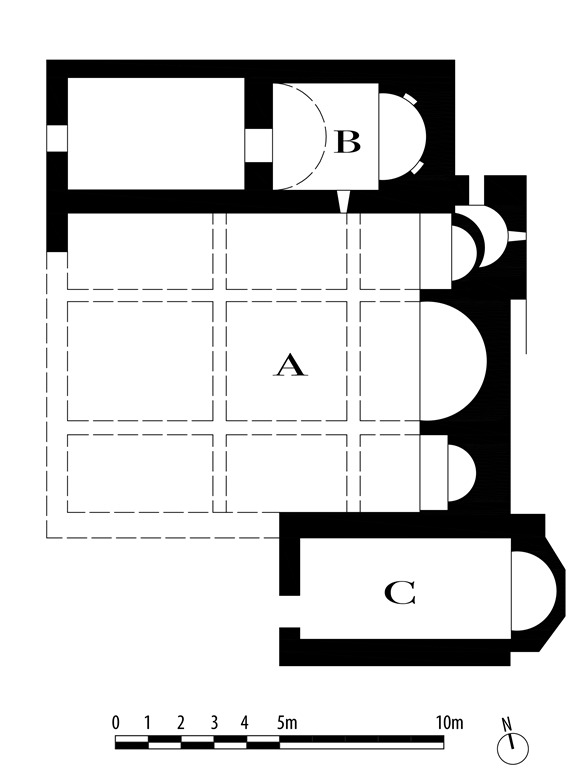This monastery is situated east of Erznga [Erzincan] on the slopes of the Kesish Dagh mountains [***, Mountain of the Monks], at an altitude of some 1400 m, between Jimin [Üzümlü] to the west and Kalarij [Karakaya] to the southeast, at 39° 41’ N et 39° 43’ E, above the village of Pt‘arij [Bayırbağ], which also gives it its name.
In the 14th-16th centuries the Saint Nicholas monastery was also called Abahuniats Vank‘, or Abahunik‘ convent, from the name of a relatively distant canton from which a community of monks formerly came to settle at this monastery. It is mentioned in 1367, 1383, 1449 and 1490: in 1367 by the names of Saint Nicholas and the Holy Mother of God, and in 1490 also as Saint James. In 1367, it held the tomb of a famous Church Doctor, Gregory (Krikor). In 1449, the copyist Garabed of Terjan [Tercan] (Garabed Terjantsi), having returned from the great Datev monastery (Dat‘evi Vank‘) in eastern Armenia, worked there alongside the superior, Simeon. At that time the monastery housed a scriptorium. The monk and poet Mgrditch withdrew to the monastery in the 16th century.
The wall around the monastery was restored in 1753, and in the 19th century, Father Kapriel Marukian earned a reputation there as a good prior. Before the Great War, the monastery was run by a layman, Apraham agha, from Pt‘arij.
The Saint Nicholas monastery at Pt‘arij includes:

• (A) The tri-absidial church of Saint Nicholas, measuring some 16.5 × 10.2 m, a raised cross-in-square built in part over of an earlier martyrium extending beyond the east wall behind the north absidiole, has a drum with a pyramid coif, and a bell turret set near the western tympanum; it is preceded by a large narthex.
• (B) Against the north wall of the above church, a small barrel-vaulted church with single-vessel nave, which could be the Holy Mother of God, preceded by a narthex with similar vaulting with which it forms a bloc some 12.8 × 4.8 m.
• (C) Against the south wall of Saint Nicholas, another single-vessel-nave church, some 8.8 × 4.8 m, perhaps the church of Saint James.
• A yard wall with a heavy iron-plated door, against which were built the prelacy and two courses of dwellings, stables and the barn.
• Down the slope, a fountain.
The name of Saint Nicholas is generally given to the large church in the middle, but the clearly greater age of the church to the north, like the existence on a lower level of an earlier martyrium, suggest that this dedication may originally have been associated with a different edifice. The monastery had a vegetable garden and beehives inside the walls; and orchards, grazing lands and plow lands outside.
Confiscated after the Great War, the Saint Nicholas monastery was appropriated and largely destroyed. In the 1980s, all that subsisted of the central church was the apse; the bell turret and narthex had disappeared. The north church was still standing, but its narthex had been destroyed. All that could be seen of the south church were a few marks on the ground. The outbuildings as well as most of the wall have also disappeared.
Surménian, 1947, 99-100, 221. Khatchikian, 1950, 481, 547. Oskian, 1951, 96-99. Khatchikian, 1955-1967, I, 639 ; III [1967], 148. Thierry, 2005, 76-78.